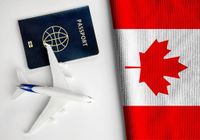Canada's Immigration, Refugees and Citizenship Canada (IRCC) has made headlines with its latest Express Entry draw, issuing 825 Invitations to Apply (ITAs) for permanent residence on April 14, 2025. This draw marks a significant shift in the immigration landscape, as it is the first to occur after the recent removal of Comprehensive Ranking System (CRS) points for arranged employment.
The latest round focused exclusively on candidates in the Provincial Nominee Program (PNP), requiring participants to have a minimum CRS score of 764. To be eligible for consideration, candidates needed to have created their Express Entry profile before 6:35 p.m. UTC on August 17, 2024. This change in the ranking system has led to a notable impact on the profiles within the Express Entry pool.
In total, IRCC has issued an impressive 31,508 ITAs so far in 2025, aligning with the federal government's ambitious plan to welcome 124,680 new permanent residents through Express Entry this year. However, it's crucial to understand that receiving an ITA does not guarantee permanent residency; it merely serves as an invitation to submit a full application for PR.
Once candidates receive an ITA, they have 60 days to submit a complete application, which includes several required documents: a valid passport or travel document, a birth certificate, proof of work experience, police clearance certificates, medical exam results, documentation of settlement funds, and photographs of all applicants included in the file.
The April 14 draw has been closely watched, especially given the recent changes to the CRS. Previously, candidates with job offers supported by a Labour Market Impact Assessment (LMIA) could earn additional CRS points—up to 200, depending on the role. The removal of these points has resulted in a noticeable decrease in higher-scoring profiles within the Express Entry pool. For instance, between March 16 and April 14, 2025, the number of profiles in the 501–600 CRS bracket dropped by 5,740, while those in the 491–500 bracket decreased by 1,618, and 984 fewer profiles were found in the 481–490 bracket. In total, these three categories saw a combined reduction of 8,342 profiles.
Despite this decrease in higher-score profiles, the overall pool of candidates grew by 7,373 new profiles during the same period. The current composition of the Express Entry pool, as of April 14, 2025, stands at 244,282 total profiles, with various CRS score ranges reflecting shifts in applicant distribution. For example, the 461–470 CRS range gained 2,157 profiles, while the 451–460 range saw an increase of 1,750 profiles.
One of the main reasons for the removal of CRS points for arranged employment was to address the misuse of the LMIA system. Ajay Sharma, an immigration expert, highlighted that candidates previously purchased fake LMIA job offers for significant sums, often ranging from $30,000 to $50,000, to boost their scores and improve their chances of receiving an ITA. “Earlier, candidates with a CRS score of around 470, 480, or 500, where the cut-off for invitations could be as high as 540, 550, or 560, were purchasing fake LMIA job offers for large sums of money,” Sharma noted. The expectation is that removing these additional points will reduce such fraudulent practices and create a fairer immigration process.
Looking ahead, the IRCC's Immigration Levels Plan for 2025–2027 aims to maintain a steady influx of new permanent residents, with the target for 2025 set at 124,680. This ambitious plan reflects Canada’s commitment to welcoming skilled workers and their families, contributing to the nation’s economic growth and cultural diversity.
As the Express Entry system evolves, candidates are encouraged to stay informed about changes and ensure their applications are complete and timely. For those interested in applying or responding to an ITA, the official IRCC portal provides step-by-step guidance to facilitate the process.
In summary, the recent Express Entry draw signifies a pivotal moment in Canada’s immigration policy, reflecting both the government's strategic adjustments and the ongoing challenges faced by prospective immigrants. The changes aim to streamline the process while addressing issues of fairness and integrity in the immigration system.






